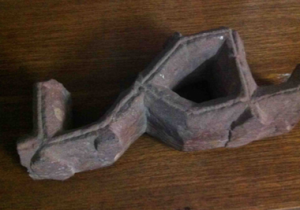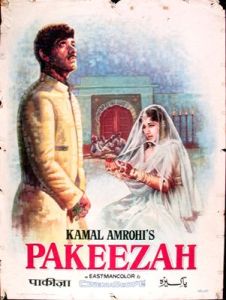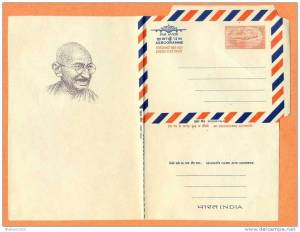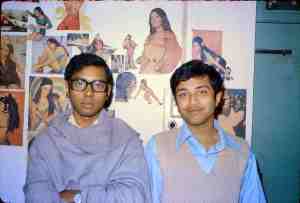 Well before I read The Double Helix I could have just as easily written the first line, “I have never seen Francis Crick in a modest mood”, substituting any number of my Science Talent batchmates’ names for Crick’s (myself included). I first got to meet many of them in Jodhpur in the summer of 1970.
Well before I read The Double Helix I could have just as easily written the first line, “I have never seen Francis Crick in a modest mood”, substituting any number of my Science Talent batchmates’ names for Crick’s (myself included). I first got to meet many of them in Jodhpur in the summer of 1970.
Today’s KVPY and INSPIRE programmes can proudly trace their origins to the National Science Talent Search Scheme (usually abbreviated to NSTS) that the NCERT initiated in 1963. The idea was to attract students to the pure sciences, and the version of it that was operational in the late 1960’s and early ’70’s, when I was in high school and in college was, in a word, great.
There was a certain simplicity to the NSTS. One wrote an exam (I remember doing that at the Government Arts College in Chennai), attended an interview (mine was in Kolkata, probably at the ISI) and one had a project (and even then mine was more theoretical than practical), and if selected, all one had to do was to sign up for a pure science degree. Luckily that suited me just fine- I was not going to do medicine (no bio in my school) or engineering, and this gave me a way out.
Without exaggeration, getting the scholarship changed my life. The NSTS gave one a monthly stipend, a book grant, and some tuition fees, but the real game-changer was the opportunity to attend Summer Schools every year up till the MSc degree!
The first was in Jodhpur… Four weeks, from the 11th of May to the 9th of June. Nearly 40 of us from all over the country landed up for one of the Chemistry summer camps (there were several others) in the University of Jodhpur’s Chemistry Department. At least half the group (see the group photo below) was in the wrong place as it happened- some confusion, several mathematics undergraduates were mixed in the chemistry group- but for many of us, it was a refreshing change to the way things were at our home institutes (mine was Loyola College in Chennai). We had lectures in the morning, lab experiments in the afternoon. And a lot of one-upmanship virtually all the time.
 It was a good summer. Hot, to say the least- it was Jodhpur after all, on the edge of the desert, and my first experience of standing up after a lecture to find one’s anatomy embarrassingly outlined in sweat on one’s trousers…The lectures were mostly new material, the lab experiments too. I had decided I was going to do a project on organic synthesis, and spent much of my time making dyes- probably the last time I ever did any…
It was a good summer. Hot, to say the least- it was Jodhpur after all, on the edge of the desert, and my first experience of standing up after a lecture to find one’s anatomy embarrassingly outlined in sweat on one’s trousers…The lectures were mostly new material, the lab experiments too. I had decided I was going to do a project on organic synthesis, and spent much of my time making dyes- probably the last time I ever did any…
The teachers of the Department were a dedicated lot who did much to mentor us, but for the most part, it was mainly from one’s peers that we learned. To be honest I was more than a bit unprepared for the summer camp, coming as I did from the relative backwater of Madras University. We had just had a strike of sorts there, agitating for a more modern curriculum, and places like Delhi University and Bombay seemed just that much more mainstream. It was a time to catch up on what everyone else was doing, even if Shankar (who was clearly one of the smart ones) would preface every answer with some put-down (the mildest of which was that his kid sister knew better and in any case much more than you).
We also discussed the next big step: where to go for the MSc. There was little doubt in our minds that IIT Kanpur was the place to go, and from that batch, 4 of us actually did. Some others became very good friends, friends whose lives have followed parallel and occasionally intersecting tracks. Lined up in that group photograph are at least two future Vice Chancellors, several Heads of Departments, some Senior Professors of well-known national institutions, and at least one CFO and one CEO.
 And one partner in crime. The Mehrangarh fort dominates the Jodhpur landscape, and visiting it was essential, and something we did the first possible weekend we were there. A pile of rubble in the fort attracted the eyes of two of us, clearly some archaeological debris… Pretty soon another expedition (a mini raiding party, truth be told) was organized, this time we took along two satchels. I’m not sure anyone really cared, but we came away with little bits and pieces of history… A fragment of a trellis, a stone flower… These have stayed with us to this day, as has the excitement of the summer, the science, and the cameraderie.
And one partner in crime. The Mehrangarh fort dominates the Jodhpur landscape, and visiting it was essential, and something we did the first possible weekend we were there. A pile of rubble in the fort attracted the eyes of two of us, clearly some archaeological debris… Pretty soon another expedition (a mini raiding party, truth be told) was organized, this time we took along two satchels. I’m not sure anyone really cared, but we came away with little bits and pieces of history… A fragment of a trellis, a stone flower… These have stayed with us to this day, as has the excitement of the summer, the science, and the cameraderie.
This cameraderie of the science talent scholars was, I believe, one reason so many of us went on to make a career in science. (There is a very large fraction of NSTS Alumni in Indian academe, so by that token, the scheme was really very successful!) The example of one’s peers is too hard to ignore, and there was always someone to learn from, and the more they made you aware of it, the more there was to gain. I very quickly realized that Bombay University’s BSc syllabus was way better than ours, so I got a copy and studied from that far more diligently than I attended classes in Loyola…
 I missed the next camp that was held in Roorkee, but made it to Chandigarh which was another memorable summer but (owing to some indiscipline on our part, I think) it was not quite the full four weeks. That summer was dominated by the movie Pakeezah, and we heard the songs so often on the Panjab University campus, that to this day they remind me most of the rajma-chawal in the hostel in the summer of 1972, with another set of science talent friends. Some had been there in Jodhpur and many who had missed that camp but who had gone to Roorkee. For all of us this was also the last such camp since we had all finished our BSc examinations- and even for those who were going on to the MSc the summer camps would all be individual laboratory placements. The discussions of what next, what research fields to pursue, where to go… all these dominated our evenings.
I missed the next camp that was held in Roorkee, but made it to Chandigarh which was another memorable summer but (owing to some indiscipline on our part, I think) it was not quite the full four weeks. That summer was dominated by the movie Pakeezah, and we heard the songs so often on the Panjab University campus, that to this day they remind me most of the rajma-chawal in the hostel in the summer of 1972, with another set of science talent friends. Some had been there in Jodhpur and many who had missed that camp but who had gone to Roorkee. For all of us this was also the last such camp since we had all finished our BSc examinations- and even for those who were going on to the MSc the summer camps would all be individual laboratory placements. The discussions of what next, what research fields to pursue, where to go… all these dominated our evenings.
This is something to think about, especially given that every year now there are almost 2000 students who participate in the Inter-Academy Summer programme. The way it works now is that students go to individual laboratories for six weeks or more during their summer vacations. The research opportunity is good, but each student is (by and large) isolated- there is no community being built. It would not take too much effort to do this, given the fact that there are large numbers of students at some places like the IISc, Bangalore or the University of Hyderabad. A few lectures together, some evening programmes, some opportunities for them all to be in a less than modest mood… maybe there would be something to it.



